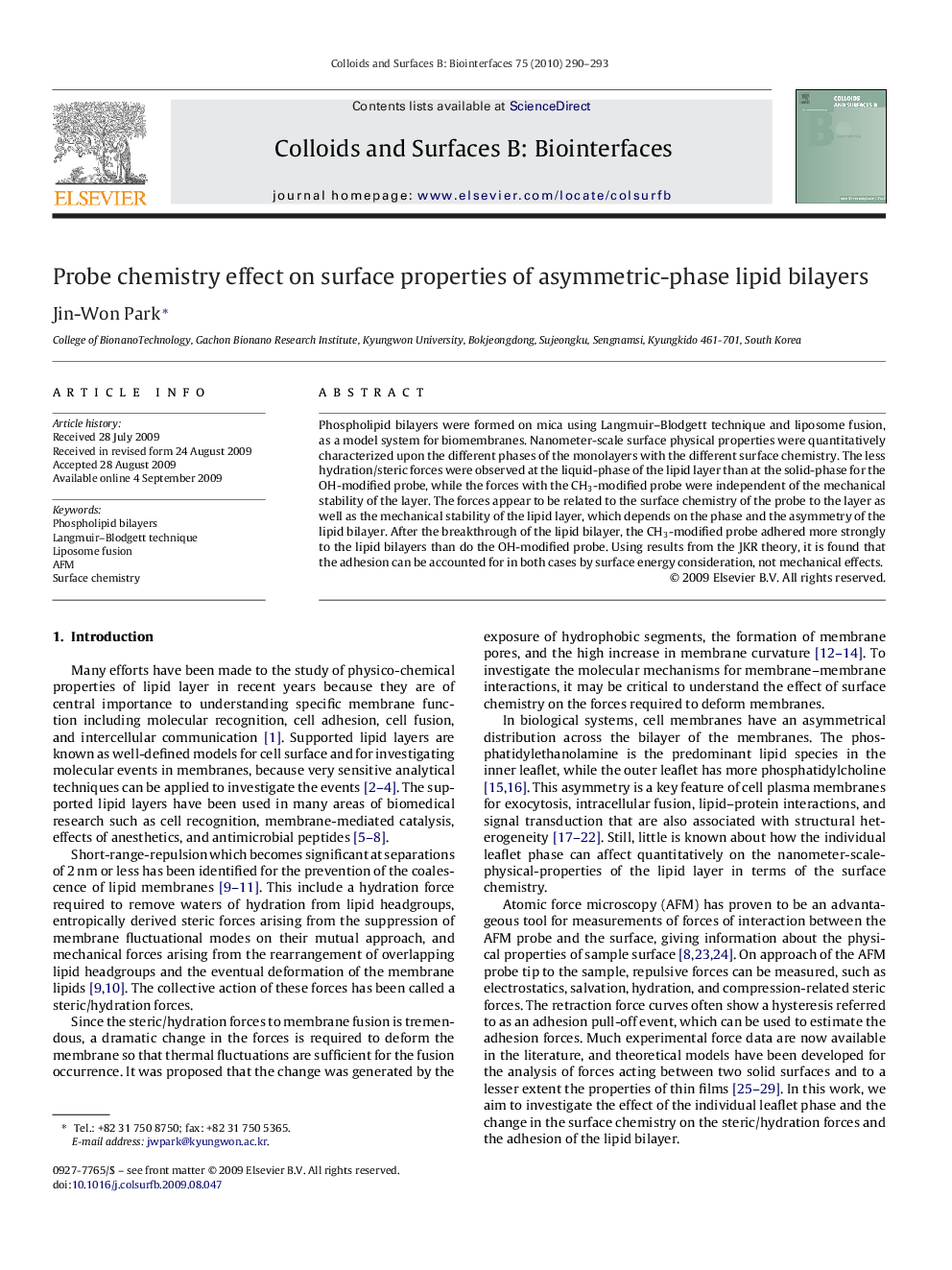| Article ID | Journal | Published Year | Pages | File Type |
|---|---|---|---|---|
| 601970 | Colloids and Surfaces B: Biointerfaces | 2010 | 4 Pages |
Phospholipid bilayers were formed on mica using Langmuir–Blodgett technique and liposome fusion, as a model system for biomembranes. Nanometer-scale surface physical properties were quantitatively characterized upon the different phases of the monolayers with the different surface chemistry. The less hydration/steric forces were observed at the liquid-phase of the lipid layer than at the solid-phase for the OH-modified probe, while the forces with the CH3-modified probe were independent of the mechanical stability of the layer. The forces appear to be related to the surface chemistry of the probe to the layer as well as the mechanical stability of the lipid layer, which depends on the phase and the asymmetry of the lipid bilayer. After the breakthrough of the lipid bilayer, the CH3-modified probe adhered more strongly to the lipid bilayers than do the OH-modified probe. Using results from the JKR theory, it is found that the adhesion can be accounted for in both cases by surface energy consideration, not mechanical effects.
